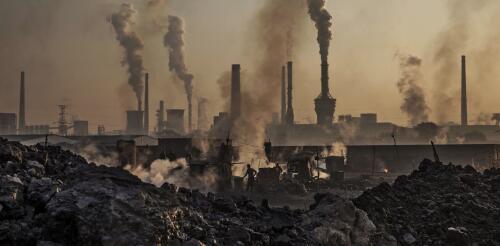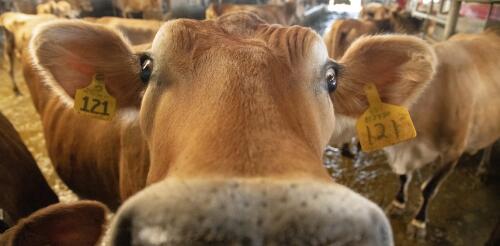Climate change
As government leaders and climate negotiators gather in Dubai for the COP28 United Nations climate conference, an enormous challenge looms over the proceedings: decarbonizing the global industrial sector. Industry has accounted for over 30% of total greenhouse gas emissions in recent years. It is the single largest emitting sector when accounting for its electricity use and heat generation. For countries to meet their goals to cut greenhouse gas emissions, stopping emissions from carbon-intensive industries like steel, cement and chemicals is imperative. There are promising technologies and innovations that can drive decarbonization in industry: green hydrogen fuel made from clean electricity and water, energy efficiency measures across supply chains, and carbon capture, use and storage to name a few. However, these solutions have yet to be deployed at the speed and scale required to slow global warming. Global industrial emissions will need to fall by 25% by 2030 for the...
The United Nations climate conference is underway in Dubai, and representatives from around the world will be confronting an extraordinary array of challenges over its two weeks. They carry with them some long-held – and new – grievances, and strong expectations. Framing the agenda is a “global stocktake” – an assessment of progress toward the 2015 Paris Agreement to keep global warming in check. Unsurprisingly, as record-breaking extreme heat has underscored so powerfully in 2023, the world is not on track. To cut emissions, progress is needed on national economic and fiscal policies, such as taxing pollution and ending subsidies for fossil fuels that are even higher today than before the pandemic, and on funds and commitments to speed a global energy and economic transformation. Funding for adaptation and disaster recovery is also high on the agenda. The United Nations’ 2023 Emissions Gap Report show...
For the first time ever, food and agriculture took center stage at the annual United Nations climate conference in 2023. More than 150 countries signed a declaration, committing to make their food systems – everything from production to consumption – a focal point in national strategies to address climate change. While the declaration is thin on concrete actions to adapt to climate change and reduce emissions, it draws attention to a crucial issue. The global food supply is increasingly facing disruptions from extreme heat and storms. It is also a major contributor to climate change, responsible for one-third of all greenhouse gas emissions from human activities. This tension is why agriculture innovation is increasingly being elevated in international climate discussions. Farmers work in a field during monsoon rains in Madhya Pradesh, India. Rajarshi Mitra via Flickr, CC BY-ND At presen...
Climate disasters are now costing the United States US$150 billion per year, and the economic harm is rising. The real estate market has been disrupted as home insurance rates skyrocket along with rising wildfire and flood risks in the warming climate. Food prices have gone up with disruptions in agriculture. Health care costs have increased as heat takes a toll. Marginalized and already vulnerable communities that are least financially equipped to recover are being hit the hardest. Despite this growing source of economic volatility, the Federal Reserve – the U.S. central bank that is charged with maintaining economic stability – is not considering the instability of climate change in its monetary policy. Earlier this year, Fed Chair Jerome Powell declared unequivocally: “We are not, and we will not become, a climate policymaker.” Powell’s rationale is that to maintain the Fed’s independence from politics and political cycles, it should use...
Human-driven climate change is increasingly shaping the Earth’s living environments. Rising temperatures, rapid shifts in rainfall and seasonality, and ocean acidification are presenting altered environments to many animal species. How do animals adjust to these new, often extreme, conditions? Animal nervous systems play a central role in both enabling and limiting how they respond to changing climates. Two of my main research interests as a biologist and neuroscientist involve understanding how animals accommodate temperature extremes and identifying the forces that shape the structure and function of animal nervous systems, especially brains. The intersection of these interests led me to explore the effects of climate on nervous systems and how animals will likely respond to rapidly shifting environments. All major functions of the nervous system – sense detection, mental processing and behavior direction – are critical. They allow animals to navigate their e...



